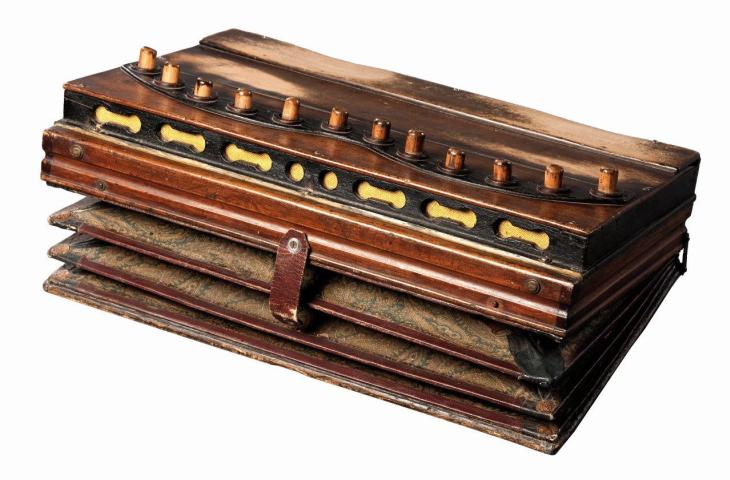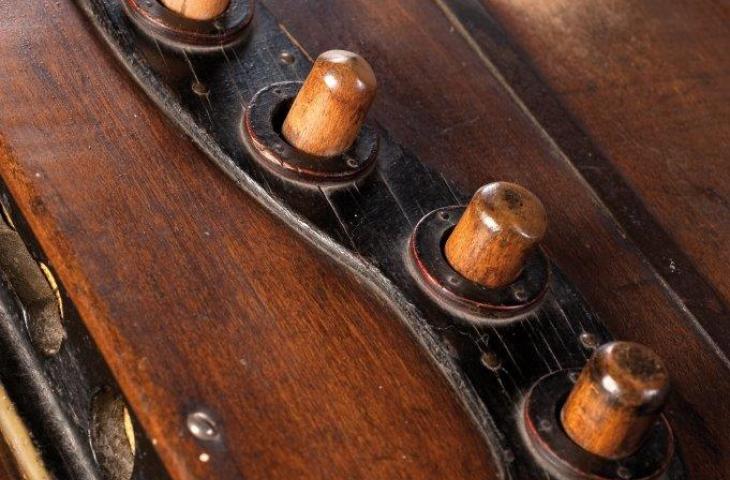Foot bass

Foot bass, Théodore Vassart-Lefèvre?, Auvelais, Namur, ca 1930, inv. 1996.003
Foot bass

Foot bass, Théodore Vassart-Lefèvre?, Auvelais, Namur, ca 1930, inv. 1996.003
The basse aux pieds (foot bass) is one of the few instruments played exclusively by the feet. It can be played separately, but always appears in combination with the accordion. Like the pedals of the organ and the harmonium, it extends the bass register. The basse aux pieds is operated on the same principle as the accordion, i.e. with a bellows that provides a supply of air and thereby causes metal tongues to vibrate. The most sophisticated models have twelve keys or buttons for an equal number of bass notes. The sound is produced by depressing the key and thereby also squeezing the bellows. A spring mechanism ensures that the bellows returns to its original position.
The basse aux pieds was developed in 1894 by the Namur accordion maker Joseph Alexandry and has remained chiefly a Walloon phenomenon. It had its heyday during the first half of the twentieth century, but gradually fell out of use after the Second World War. The last player of the old generation, Edmond Croibien, died in 1997 and it is his instrument that is pictured here, donated to the MIM by his family.